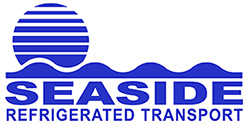Overall, most people did not change their alcohol consumption, but among those who did, a greater proportion increased their drinking. Results from a survey1 conducted between May and June 2020 in Australia, Austria, Brazil, France, Germany, Ireland, the Netherlands, New Zealand, Switzerland, the United Kingdom and the United States (Winstock et al., 2020[2]) show that 36% of people increased their alcohol consumption, 22% decreased their consumption and 42% reported no change in the amount drunk. On March 11, 2021, the South Carolina House of Representatives approved two bills that would allow restaurants to deliver alcohol as part of a food delivery and allow consumers to pick up alcohol the same day they order. Both proposals are adopted by the General Assembly and have the possibility of becoming law in 2022, but are not yet in force. Currently, whether restaurants in Wyoming can provide alcohol depends on the type of liquor license the restaurant holds. Restaurants operating under a full liquor retail licence may provide alcohol or offer take-out alcohol. Two days after Delaware Gov. John Carney closed restaurants for food service on March 16, 2020, he allowed restaurants, breweries, taverns and bars to sell takeout alcohol, including cocktails. Harmful alcohol use is harmful to health, causes illness and injury, weakens the response to COVID-19, and has significant economic and social costs.
Comprehensive packages of measures based on a PPPP approach, including pricing policies, police to combat drink-driving, advice on primary care for heavy drinkers and regulation of alcohol promotion measures, improving health, and supporting a stronger economic and social recovery from the pandemic. On May 18, 2021, Governor Hogan signed a bill making the provision of cocktails and alcohol to go permanent. As you can imagine, alcohol sales in Florida are affected by a number of restrictions. Airlines halted alcohol sales early in the pandemic as part of a drastic reduction in in-flight services aimed at reducing interactions between flight attendants and passengers, but many have extended the policy due to flight attendant concerns about an eruption of recalcitrant behavior. For many people, drinking alcohol is an enjoyable part of their social life. During the lockdowns and restrictions put in place to combat COVID-19, social life has been significantly disrupted and the hospitality industry has been severely impacted. However, harmful patterns of alcohol consumption remain dangerous to human health and costly to society, according to the latest OECD report on the prevention of harmful alcohol consumption (OECD, 2021[9]). Even after the pandemic starts, changing dietary restrictions mean many restaurants can`t predict exactly how much alcohol to order. As for continued alcohol distribution in Florida, it will be interesting to see what the future holds for alcohol sales in Florida. Florida is one of thirteen states trying to make takeout drinks permanent. Customers have become accustomed to ordering take-out drinks, so limiting this capacity could prove problematic after the pandemic. American and Southwest Airlines said their initial suspension from alcohol would last as long as the federal requirement to wear a mask.
For more information about delivering and collecting alcohol in Oklahoma, contact the Oklahoma ABLE Commission. Second, preventing harmful alcohol use reduces pressure on health services. Hospitals and medical staff are already under enormous pressure to care for COVID-19 patients. Reducing the health care system`s workload for alcohol-related preventable diseases is helping physicians focus on both COVID-19 patients and patients in urgent need of treatment for other conditions. For example, South Africa experienced a 65% drop in emergency room use for alcohol-related cases related to trauma during the pandemic following the introduction of alcohol prohibition (EyeWitness News, 2021[23]). The new rules also state that restaurants will only be allowed to sell alcohol with food in the original, unopened packaging, and sales are limited to 72 ounces of beer, cider or hard seltzer and 750 milliliters of wine per order. At the beginning of the pandemic, many restaurants had to find a way to get rid of their excess stocks of alcohol. For some, cancelling events like SXSW and St. Patrick`s Day means they actually have more alcohol (and less money) on hand than usual.
Harmful alcohol use in adolescence reduces the level of education. Analysis of longitudinal datasets from New Zealand, the Russian Federation, the United Kingdom and the United States suggests that students with harmful drinking habits have lower long-term academic performance and education levels, particularly among girls (OECD, 2021[9]). In the longer term, lower educational outcomes impact human capital formation, economic growth and social services, and exacerbate inequalities. On October 1, 2021, a new law came into force allowing qualified businesses interested in supplying alcohol to submit an application to the Alcoholic Beverage Control Board. To participate, restaurants or bars must pay a non-refundable registration fee of $100 and a license fee of $250. If a venue is approved for the supply of alcohol, employees or third-party vendors may be used to deliver a limited amount of alcohol to your home. In January 2021, a similar bill, House Bill 674, was signed, allowing alcohol to be delivered to a consumer`s door as long as it remains in its original container. Deliveries can be made seven days a week, on holidays and day and night with new extended opening hours.

